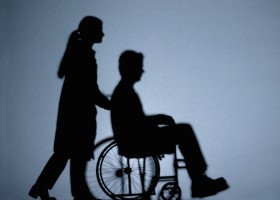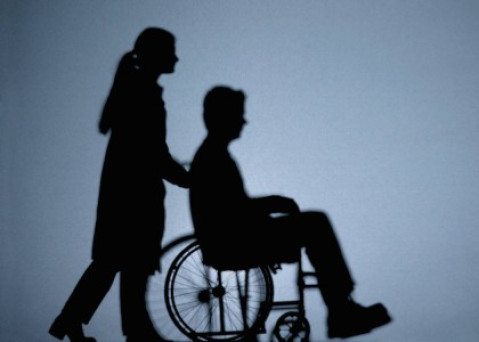Widgetized Section
Go to Admin » Appearance » Widgets » and move Gabfire Widget: Social into that MastheadOverlay zone
The 21st Century Direct Support Workforce in the United States
By Julie Ann Racino
The Direct Support Workforce in the United States is considered to be one of the fastest growing sectors of the 21st century economy. This is in part due to the shift from an industrial to service economy (See, also, Boris & Klein, 2012 and Gubrium & Sankar, 1990).
Other primary rationales for this growth are the aging of the Baby Boomers, the shift from institutional to community services, the major entry of women into the workforce and the availability of health care financing such as federal Medicaid for these health services.
 The workforce is known to include the home care industry for example, licensed practical nurses, registered nurses and certified nursing assistants and the new immigrant populations, which consist largely of women. It also includes entry-level community workers, too often neglected or disregarded by the state, unionized (institution-community) workforces, and personnel with diverse status and hierarchies. These workers include psychiatric rehabilitation, allied health, community support workers, supported employment workers, community residential personnel, behavioral aides, day treatment and recreation personnel, support housing, and the 20 or more categories of human service workers described in Mehr, 1995/2002 (See, also, Racino, 2000/2013).
The workforce is known to include the home care industry for example, licensed practical nurses, registered nurses and certified nursing assistants and the new immigrant populations, which consist largely of women. It also includes entry-level community workers, too often neglected or disregarded by the state, unionized (institution-community) workforces, and personnel with diverse status and hierarchies. These workers include psychiatric rehabilitation, allied health, community support workers, supported employment workers, community residential personnel, behavioral aides, day treatment and recreation personnel, support housing, and the 20 or more categories of human service workers described in Mehr, 1995/2002 (See, also, Racino, 2000/2013).
In addition, the community workforce is both highly professionalized and relatively untrained, in part due to an ordinary citizenship approach to families and communities (See, Towell & Beardshaw, 1991 from Great Britain; Felt and Walker, 2000 on worldwide L’Arche). The community services fields rely on disciplinary professionals within their agencies from “intake” social workers to rehabilitation counselors, “testing” psychologists, “admitting” psychiatrists, personal physicians, and so forth (Racino, 2000).
Community services administration with a specialty in disability is unknown in the fields (Racino, 1983) with administrators variously trained in different disciplines, including public health, psychology, social work, education, rehabilitation, public policy, public administration, special education (disability policy), speech therapy and communications. Now, also nursing administration, health services management as well as community and behavioral services.
By the 1990s, the institutional populations, represented by intellectual and developmental disabilities, had shifted and over half were  served through community services (Lakin, 1991). The government’s deinstitutionalization public policy (See, Sept. 20 PA Times article) now involved community service typologies, funding criteria, community workers (state, other public, private, voluntary), categorical service systems, dual community-institutional systems and personnel management policies, among others. The service system change between 1970-1990 was considered to be revolutionary and “extremely labor intensive” (National Task Force on Human Resource Development, 1993).
served through community services (Lakin, 1991). The government’s deinstitutionalization public policy (See, Sept. 20 PA Times article) now involved community service typologies, funding criteria, community workers (state, other public, private, voluntary), categorical service systems, dual community-institutional systems and personnel management policies, among others. The service system change between 1970-1990 was considered to be revolutionary and “extremely labor intensive” (National Task Force on Human Resource Development, 1993).
However, the direct support workers remained often unacknowledged (Taylor, Bogdan & Racino, 1991, Racino, 2000) with the community systems all developing like the “one hat, one boot, one shoe” of one categorical, disability systems, as coined by the late New Hampshire state director Richard LePore (Racino, 1999). Yet, the community systems developed new, evidenced based service practices, federal-state-local organizational systems, contracting and quality assurance mechanisms, human resource and education offices, and advocacy and technical assistance systems (e.g., Americans with Disabilities Act), among others.
Many community agencies, “home grown” in the 1970s, were originally staffed with leadership at the master’s level (larger agencies, now Ph.D.), bachelor’s level mid-managerial or supervisory and aspirations for an AA degree at the entry level.
In relationship to the new Direct Support Professional (from the 1970s), the “Department of Health and Human Services estimated that by 2020, the number of DSP’s needed to meet the demand for long term services will grow to an estimated 1.2 million FTEs.” These positions will be needed to support the population of individuals with intellectual and developmental disabilities (USDHHS, 2006). Family caregivers continue to provide the bulk of services to their children and adults living at home (e.g., Traustadottir & Taylor, 1998), and seek family-directed services such as respite, family support and cash subsidies from the government (e.g., Caldwell & Heller, 2007; Racino, 2013).
The Centers for Medicare and Medicaid now has a provision to allow self-directed services which have not been well-utilized by groups involved with traumatic brain injury (See, also Brain Injury Association of America, 2006; Kreutzer & Wehman, 1991; Racino, 1999).
In 2013, the National Direct Service Workforce Resource Center has focused on four service sectors: intellectual and developmental disabilities (IDD); aging; physical disabilities (PD); and behavioral health and addictions (BH). As the University of Minnesota and the Lewin Group (2008) describes, “the direct support workforce is highly fragmented reflecting widely different histories, philosophies, funding, policy, services and advocacy systems.” The Workforce Center was created by the Centers for Medicaid and Medicare in the US and involves a recognition of the need for personnel education at the Direct Support Professional level by the state and federal workforces through a regulatory, fiscal and education stance (NDSWRC, in press, 2013).
Other developments in education and training are the initiatives of the Center for Personal Assistance Services in 50 states to focus on training nurse’s aides and certified nurse’s aides to serve individuals with disabilities (Center for Personal Assistance Services, 2013). The National Direct Service Workforce Resource Center is identifying core worker competencies building upon multi-decade work in personnel development (Larson & Hewitt, 2005; Knudsen, Johnson & Roman, 2003; ADA Regional Centers, 2013; Racino, 2000). For example,, formation of New York State Association of Community Residence Administrators Education Committee.
Always of concern are critiques regarding diversity, multiculturalism and now the “intersectionality” of gender, race, income, ethnicity and disability (Traustadottir, 2006 in Racino, 2013). Of utmost importance are the community world which involves disability and “charities”, public health (Drum, Krahn & Bersani, 2009), NGOs and disability non-governmental organizations (NGOs), and local communities, towns, districts, and cities (See, http://www.en.wikipedia.org/wiki/community_integration).
In contrast, the Centers on Disabilities in the US, have concentrated on the “allied health” personnel which traditionally were the physical, speech and occupational therapists, among others (Association of University Centers, 2011). The Association also leads in areas such as disability leadership fellowships and linkage with medical personnel, but has targeted less than 4 percent development in public administration, human development and the newer disability and cultural studies programs in education. Independent living development has been distinct with now 405 main centers of independent living, 330 branch offices, and 56 statewide coordinating councils (National Council on Independent Living, 2013).
However, in the university sector while “winning disability studies,” the major community “IL services professional” was primarily in rehabilitation programs (e.g., often a course session in such as program).
The US direct support workforce requires leadership in diverse areas including public administration leadership in areas of innovation and foundational change such as housing and family support:
http://www.en.wikipedia.org/wiki/supported living http://www.en.wikipedia.org/wiki/Supported_housing http://www.en.wikipedia.org/wiki/Family_Support
Leadership for families and children, for adults with disabilities, in the university, college and community college sectors need to be expanded from interdisciplinary institutes, centers and related contracts to established programs dedicated to community services and their expansion. Currently, Non-Profit Management Seminars, United Way Executive Education, Executive Consultations to Categorical Systems Leadership, Executive Groups by Areas (National Institute on Disability Research and Rehabilitation Leadership) and similar in-service or field education (e.g., university-based) often form the majority of the public administration leadership.
———————————————————————————————————————————————————————-
For more information, see the forthcoming book, Public Administration and Disability: Community Services Administration in the US (Racino, 2013) and detailed information on the National Direct Service Worker Resource Center (Larson et al, 2013, same book).
Community and Policy Studies is proposing new certificates for 2014 in community services administration, and disability specialist in community administration.






Follow Us!